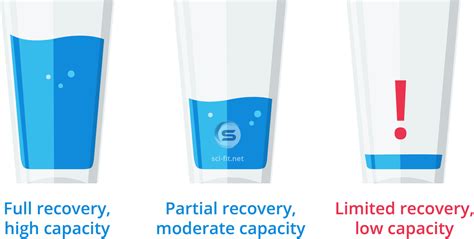Optimize training: How to program deload weeks for sustained peak strength gains?

The Unsung Hero of Strength Training: Deload Weeks
For many lifters, the idea of intentionally reducing training intensity or volume can feel counterintuitive to making progress. However, the strategic implementation of deload weeks is not a sign of weakness but a smart, evidence-based approach to optimizing your training for long-term, sustained peak strength gains. Instead of pushing relentlessly until burnout or injury, a deload week provides your body and mind with the necessary respite to recover, adapt, and come back stronger.

What Exactly Is a Deload Week?
A deload week is a planned period, typically one week long, where you significantly reduce the stress of your training. This doesn’t mean taking a complete break, but rather backing off from your usual working weights, sets, or reps. The primary goal is to allow your central nervous system (CNS), muscles, and connective tissues to recover from accumulated fatigue, without completely detraining or losing the adaptations you’ve worked hard to build.
Think of it as stepping back to propel yourself further forward. It’s a proactive measure to prevent overtraining, minimize injury risk, and solidify your strength gains before embarking on the next intensified training block.
Why Deloads Are Crucial for Sustained Peak Strength
Ignoring the need for recovery is a common pitfall among dedicated strength athletes. While pushing hard is essential, continuous high-intensity training without adequate breaks leads to diminishing returns and potential setbacks:
- Prevents Overtraining: Chronic fatigue, persistent muscle soreness, decreased performance, irritability, and disrupted sleep are all signs of overtraining. Deloads interrupt this cycle, allowing your body to catch up.
- Aids Physiological Recovery: It gives your CNS a much-needed break, allowing neurotransmitter levels to normalize. Muscles can fully repair and supercompensate, and connective tissues (tendons, ligaments) get a chance to recover from microtraumas.
- Consolidates Gains: During a deload, your body isn’t just recovering; it’s adapting. The strength and hypertrophy you’ve stimulated can be fully realized and solidified, setting the stage for even greater progress.
- Reduces Injury Risk: By allowing tissues to repair and adapt, you significantly lower the risk of overuse injuries that often plague lifters who constantly push their limits.
- Mental Refreshment: The mental grind of intense training can be exhausting. A deload offers a psychological break, renewing motivation and focus for future sessions.

Programming Your Deload Week Effectively
There’s no one-size-all approach to deloading, but certain principles apply. The key is to reduce stress without completely detraining. Here’s how to program it:
When to Deload: Timing is Everything
- Scheduled Deloads: A common strategy is to deload every 4-8 weeks of intense training. Beginners might manage longer cycles (6-8 weeks), while advanced lifters or those on high-volume programs might benefit from deloading every 3-5 weeks.
- Listen to Your Body: Don’t wait for a scheduled deload if you’re experiencing clear signs of overreaching or fatigue: persistent soreness, joint pain, decreased performance, poor sleep, lack of motivation, or irritability.
Methods of Deloading: Reduce Stress Smartly
You can adjust one or more of these variables:
- Reduce Volume (Most Common): Keep the intensity (weight) relatively high, but significantly cut down on sets and reps. For example, if you normally do 3-4 sets of 5 reps, try 1-2 sets of 3-5 reps with your regular working weight. This maintains strength while reducing overall fatigue.
- Reduce Intensity (Weight): Keep your usual sets and reps, but drop the working weight significantly – often 40-60% of your 1RM, or 60-70% of your typical working weight. This allows for movement practice without high loads.
- Reduce Both Volume and Intensity: This is a more conservative approach, ideal for those feeling very fatigued or recovering from minor aches. Cut both weight and sets/reps. For example, 1-2 sets of 5 reps at 50-60% of your working weight.
- Alter Exercise Selection: Temporarily switch from highly fatiguing compound lifts (e.g., back squats, deadlifts) to less demanding variations or isolation exercises.

Example Deload Week Structure
If your normal training involves 3 sets of 5 reps at 80% of your 1RM:
- Volume Deload: 1-2 sets of 5 reps at 80% of your 1RM.
- Intensity Deload: 3 sets of 5 reps at 60-70% of your 1RM.
- Combined Deload: 1-2 sets of 5 reps at 50-60% of your 1RM.
Regardless of the method, the goal is to finish your deload workouts feeling refreshed, not fatigued. Don’t chase the pump or try to hit PRs.
Benefits of Strategic Deloading: Long-Term Gains
Embracing deload weeks as an integral part of your training will lead to more consistent progress over time. You’ll experience:
- Fewer plateaus and more frequent breakthroughs.
- Reduced risk of injury, keeping you in the gym consistently.
- Improved mental well-being and sustained motivation.
- Better sleep and recovery outside the gym.
- A deeper understanding of your body’s recovery needs.

Conclusion: Make Deloads Your Ally
Deload weeks are not an admission of weakness but a calculated strategy for advanced progression. By intelligently programming these periods of reduced stress, you empower your body to fully recover, adapt, and supercompensate, paving the way for sustained peak strength gains and a long, injury-free lifting career. Incorporate them wisely, listen to your body, and watch your strength consistently climb to new heights.








